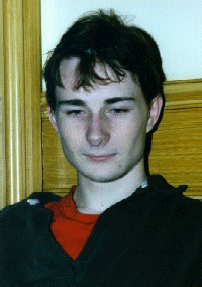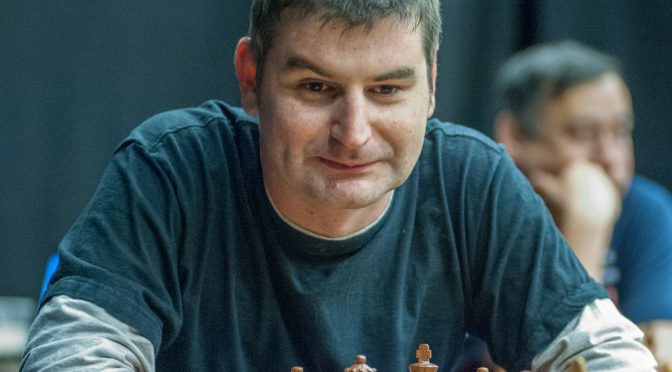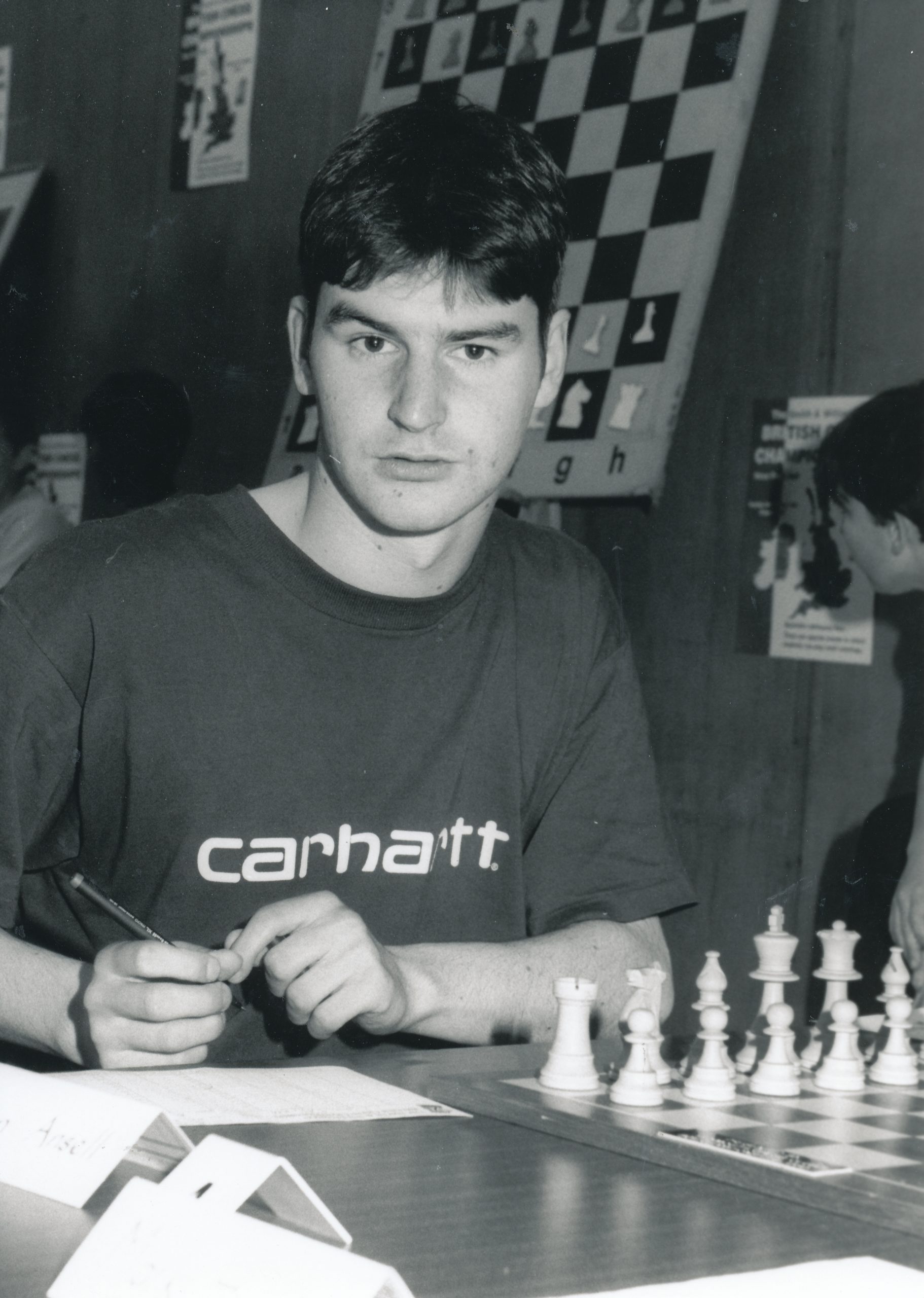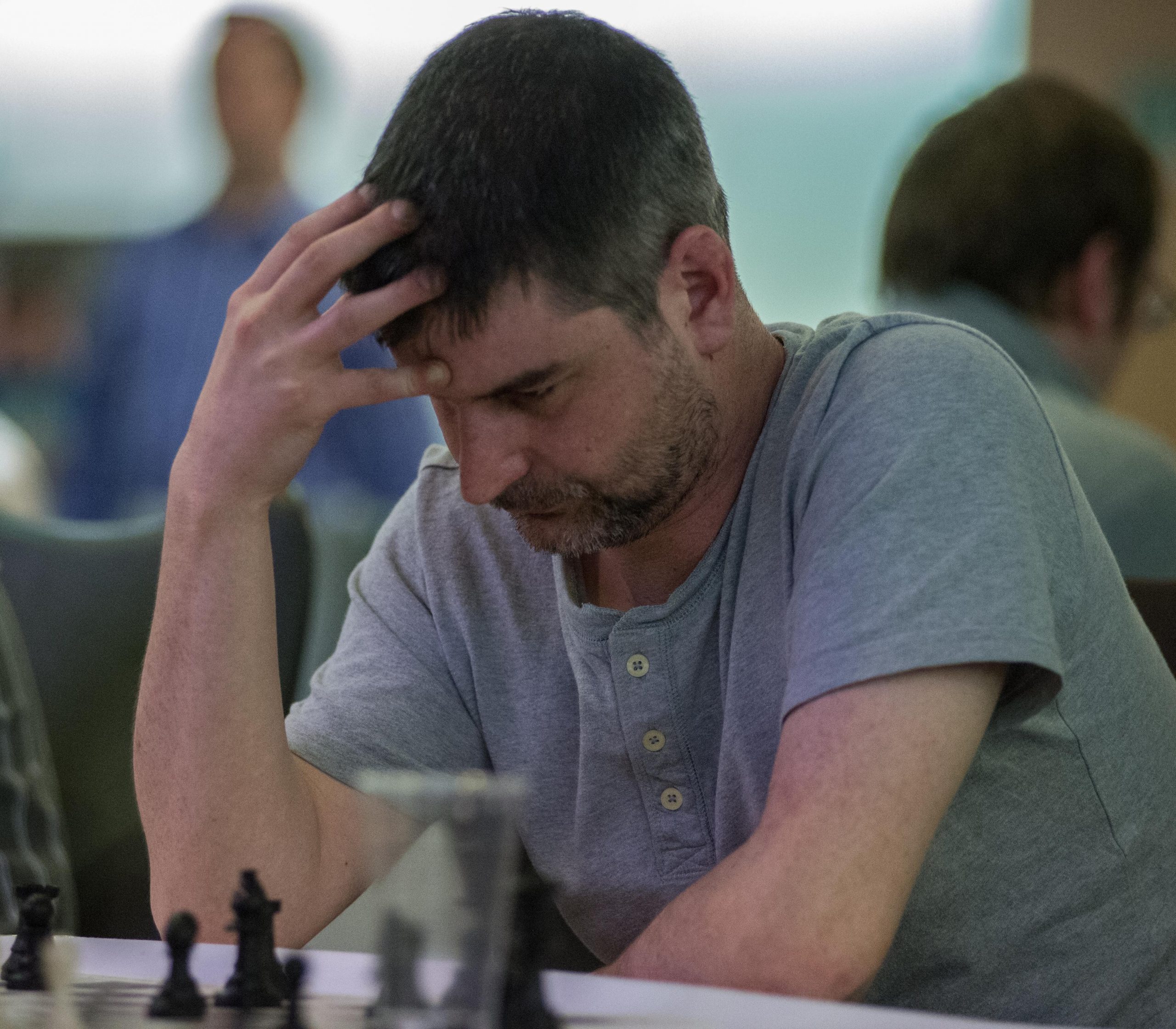Birthday of IM Mark Ferguson (17-ii-1977)
Tag Archives: 2020
Birthday of IM Mark Ferguson (17-ii-1977)
Kings of the Chessboard
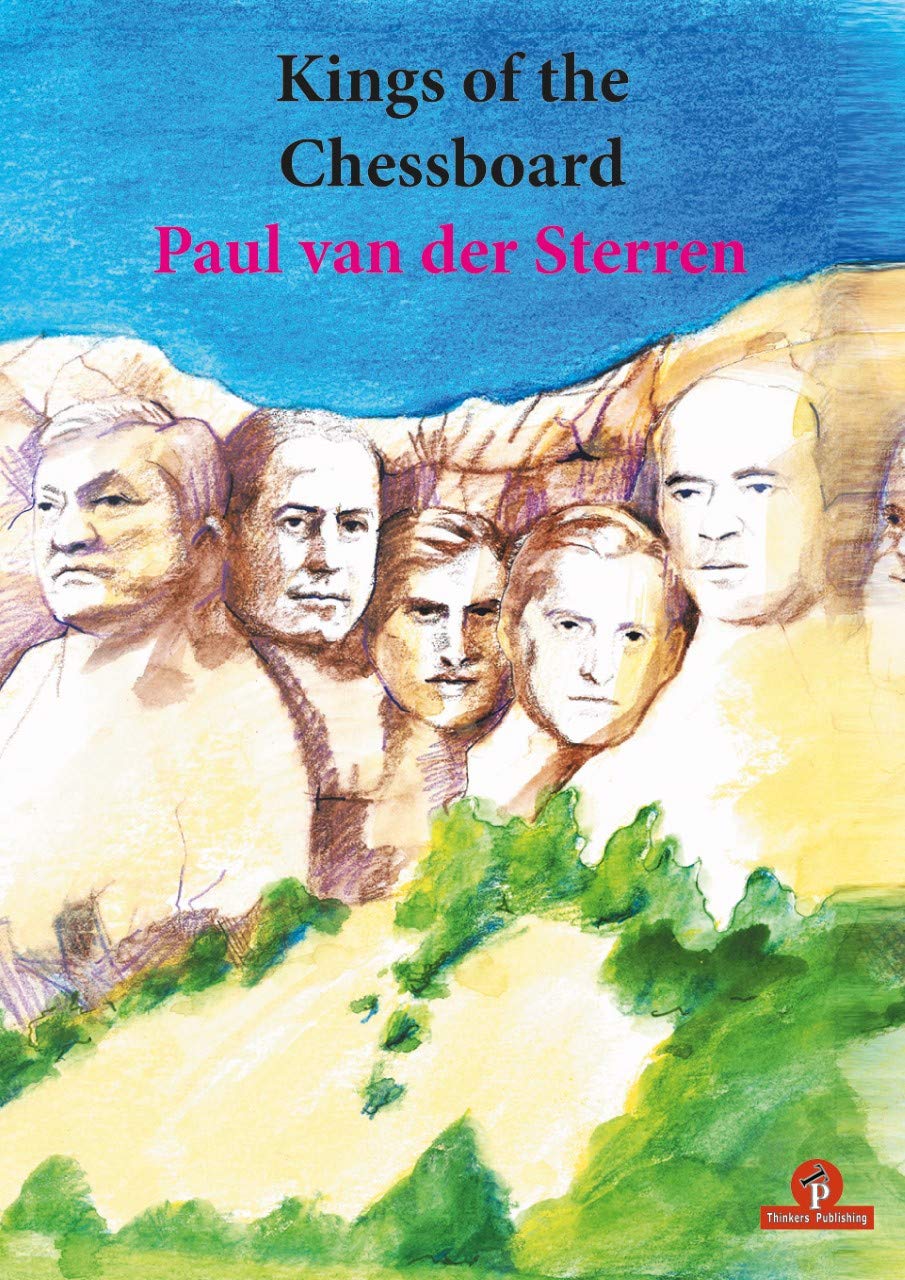
“Grandmaster Paul van der Sterren (1956 ), was one of the strongest chess players of the Netherlands. He became twice national champion and represented his country eight times during the Chess Olympiads. In 2001 he retired from being an active player and focused on writing books drawn from his rich chess experience. This is his first English chess book written for Thinkers Publishing.”
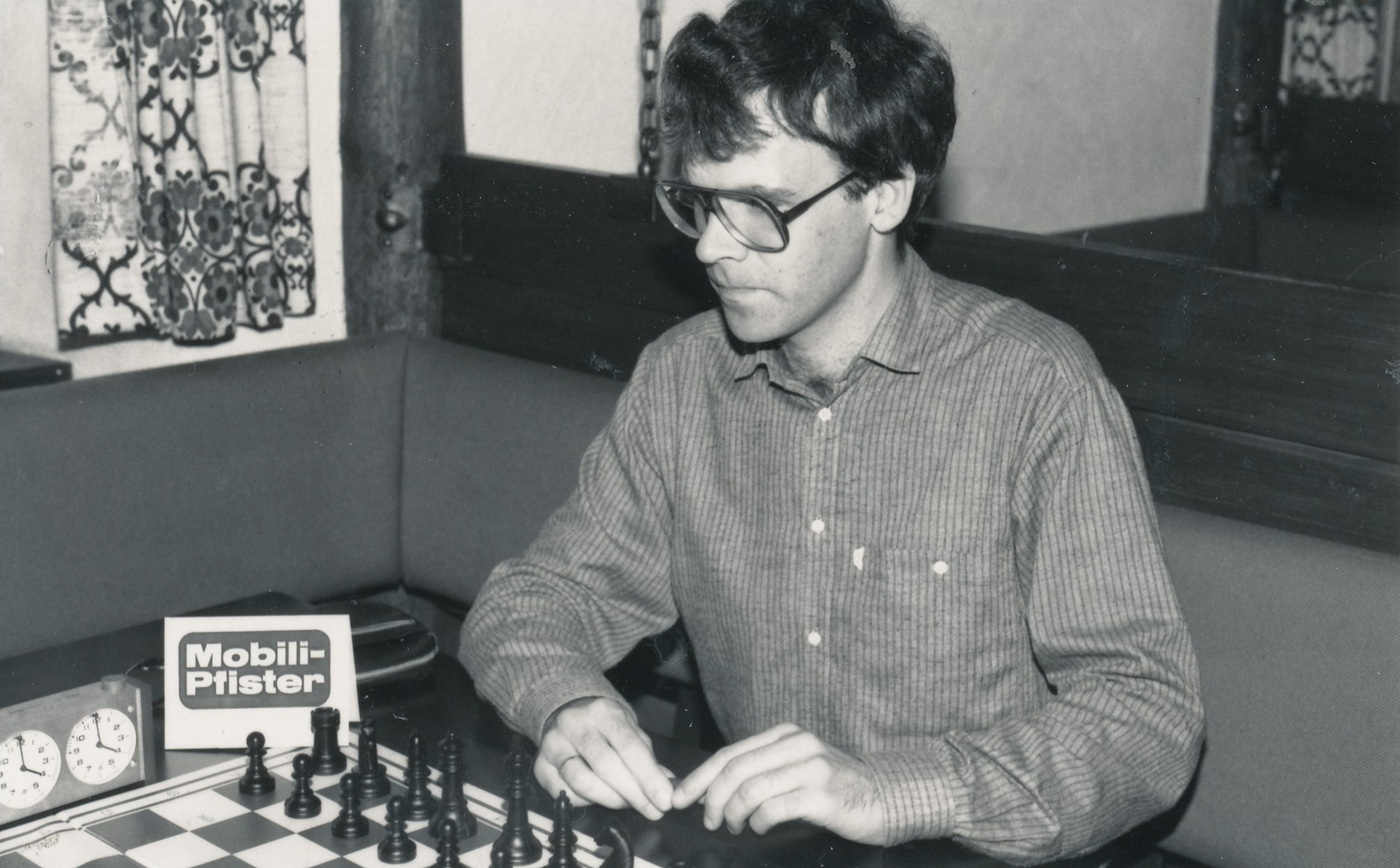
Many chess players are strikingly ignorant of their game’s heritage, so there’s always a place for a new book offering readers a quick spin through chess history.
There are, broadly speaking, several ways this could be approached: a selection of Famous Games for those who haven’t seen them before, a history of the world championship itself, or an essay on the development of chess style and opening theory over the centuries.
Van der Sterren’s book seems to combine all three approaches. How does it fare?
As I have a particular interest in pre-20th century chess history I decided to dive in at the beginning.
We start, not unreasonably, with Philidor. After some biographical information we might be looking forward to seeing how he played.
Alas, not. The author makes the extraordinary claim that “It is true that some fragments of his games have made it into today’s databases, but their authenticity is doubtful and it is likely that these are mostly fictitious games invented by him for the purpose of teaching or demonstrating a particular point he wanted to make.”.
Really? Is van der Sterren confusing Philidor with Greco, perhaps? While it’s true that the games in his books, and there were only a few, were fictitious, my database has one piece of analysis from 1749 along with 60 complete and 5 partial games against named and known opponents from between 1780 and 1795, all but the first played in London. They were collected by Philidor’s friend George Atwood and many of them were published by George Walker in 1835. There is no doubt at all of their authenticity.
We then move onto the match(es) between La Bourdonnais and McDonnell in 1834. A complete game would have been good but all we get is the Famous Position where the Frenchman forced resignation with three pawns on the seventh rank, without any explanation as to how the position arose.
Then comes the first international tournament: London 1851. We meet Staunton and Anderssen, and, guess what, we see the finales of the Evergreen and Immortal Games. Again, if you really want to publish them because your readers might not have seen them before, why not give the complete games?
According to van der Sterren, “Now Black has to play the defensive move 20… Na6.”. Historians disagree about whether or not Kieseritzky resigned before playing this move (he claimed he did), or whether he played the move and Anderssen announced mate, but why not mention the much better, but still insufficient, defence 20… Ba6?
Come to think of it, why not mention that both the Immortal and Evergreen games were casual encounters in which Anderssen could afford to take risks?
Moving on, inevitably, to Morphy, by this point I started to play a game with myself, guessing what I’d find in each chapter. Opera House game? Tick! Queen sac v Paulsen? Surprisingly not.
On to Steinitz. Bardeleben at Hastings? Tick! Van der Sterren talks about Steinitz’s advocacy of positional chess, and then aims to justify the inclusion of this tactical game atypical of his late style by incorporating some callout boxes labelled ‘Misunderstandings’ in a rather ugly childish font: something not repeated elsewhere in the book.
Lasker? Exchange Lopez ending v Capa? Tick! Then, on p49, in a moment of carelessness, we meet ‘Dawid Janowksi’,
On the same page we see a Famous Pawn Ending between Lasker and Tarrasch:
We’re told that “By looking at the position in a concrete way instead of relying on general considerations, it is possible to find a concrete path to salvation for Black.”. It’s White, not Black, who finds a concrete path to salvation by playing, after 40. h4 Kg4, 41. Kg6 rather than the losing Kf6. Although the annotations throughout the book are mostly verbal we do get a variation which demonstrates why Kf6 loses.
Capablanca? Qb2 v Bernstein? Tick! Rook ending v Tartakower? Tick! But not full games.
Alekhine? v Réti in 1925? Tick! Bogo in 1922? Tick! Again, only the closing stages so we don’t get to see how he reached those positions.
To be fair, the book improves as it approaches the 21st century, and we start meeting players the author knew or knows well.
Here, for instance, is a position from a game I must have seen at the time, but had forgotten about.
This is Anand-Karpov Las Palmas 1996. Here, Vishy played Bxh7+!.
“Anand must have felt there is bigger game to be hunted than just a pawn. Still, to forego a perfectly reasonable option with an extra pawn and a draw in the bag, in favour of a piece sacrifice with unpredictable consequences, is not a decision many players would have made. It is a sign of self-confidence, great powers of calculation and bravery; in other words the hallmark of the most pure, sparkling talent.”
This is typical of van der Sterren’s style of annotation: words rather than variations and a tendency towards hero-worship.
Anand himself is, typically, more modest: “Here, I spent a few seconds checking 21. Rxd5 which leaves White with an extra pawn, but as I mentioned earlier I couldn’t be bothered. I saw Bxh7+ and didn’t waste any more time on Rxd5. I then spent some time analysing Bxh7+, and didn’t see a defence for Black. I then realized that I was too excited to analyse and decided to get it over with. He had hardly any time left already and I was sure that he wouldn’t find a defence.”
Does the book succeed? Although I don’t like being negative in my reviews, I’m afraid not. It suffers from trying to do too much in too short a space, and from a lack of historical knowledge and awareness. If you know anything at all about the history of our beautiful games you’ll have seen almost everything before, and you’ll be frustrated by the broad brushstrokes.
Back in 1987, Mike Fox and I were criticised by some reviewers for including a chapter of Greatest Games in The Complete Chess Addict, but they failed to understand that our target market was social players who wouldn’t have seen them before. By the same token, there may still be a market for a collection of Famous Games, Famous Combinations and Famous Endgame Studies. There are several other histories of the world championship, and treatises on the development of chess style and opening theory, but books that are up to date and whose authors have something new to say are always welcome. This book doesn’t really do any of these things very well, and there is very little original content or thought. If you try to be everything to everyone you end up being nothing to nobody.
However, the book is, for the most part, nicely produced, with a lot of attractive photographs. For someone just starting out in competitive chess who would like to know more about the game’s history, this could be just what they want to pique their interest and encourage them to study this fascinating aspect of chess in more detail.
Richard James, Twickenham, 18th February 2020

Book Details :
- Paperback : 264 pages
- Publisher: Thinkers Publishing; 1 edition (20 May 2019)
- Language: English
- ISBN-10: 9492510537
- ISBN-13: 978-9492510532
- Product Dimensions: 17.1 x 1.9 x 23.5 cm
Official web site of Thinkers Publishing

Birthday of IM Simon Ansell (11-ii-1975)
Birthday of IM Simon Ansell (11-ii-1975)
Birthday of IM Simon Ansell (11-ii-1975)
Birthday of IM Simon Ansell (12-ii-1975)
Opening Repertoire : The Modern Defence
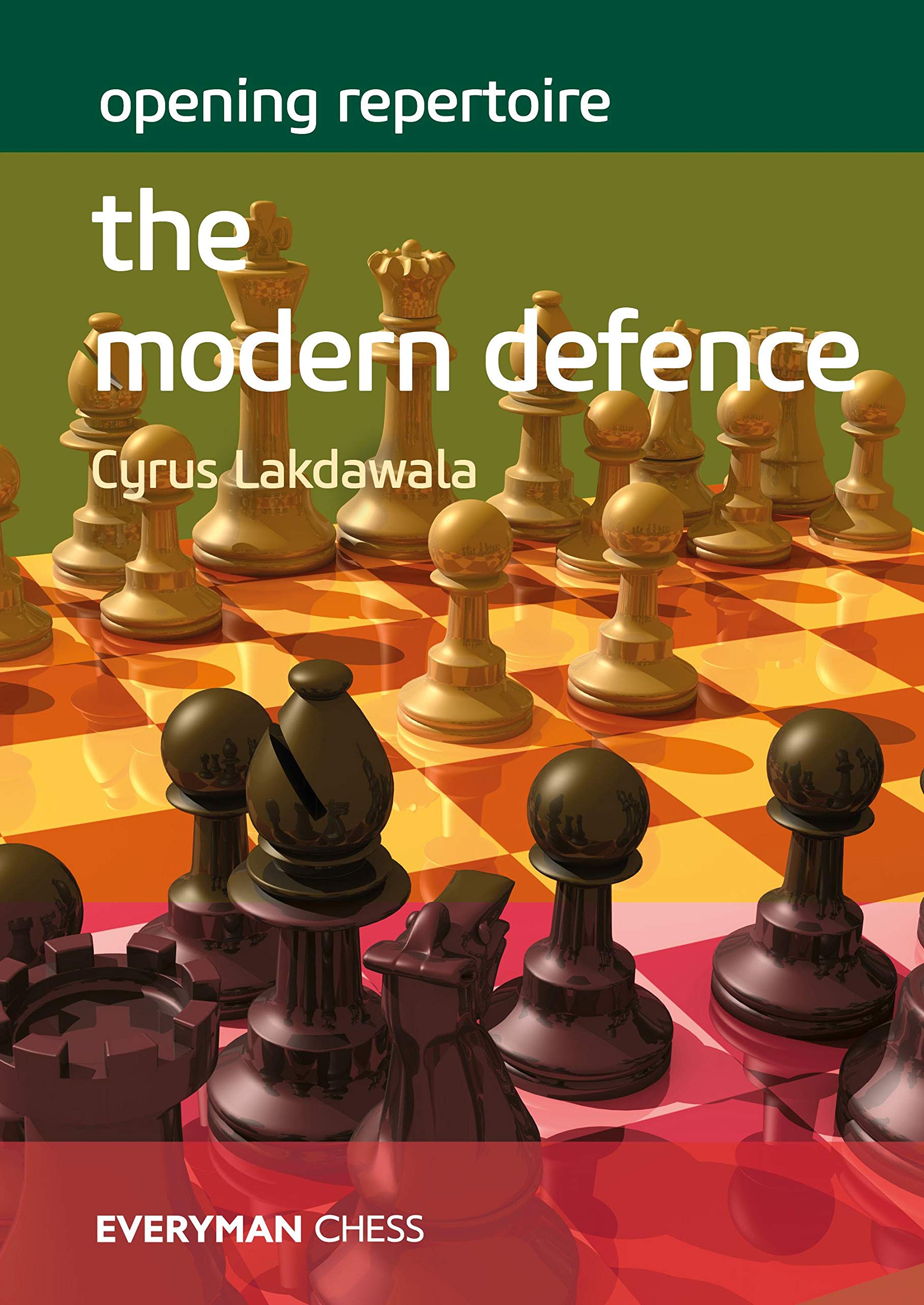
Cyrus Lakdawala is an IM and former US Open Champion who teaches chess and has written over 25 books on chess openings.
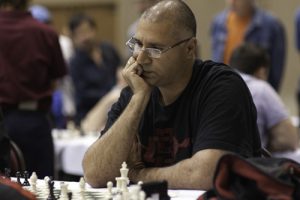
As a treat for our readers we allow you to download this review in Portable Game Notation (pgn) format. We suggest ChessBase Reader as a means of opening the file.
You may also download this review in ChessBase (.cbv) format.
This is the Modern Defence, which has been described both as a fighting opening, based on counterattack and a masochistic paradise, where Black has to sit with less space for the whole game and then loses.
Having played the Modern for some 40 years now, I can testify that the truth is somewhere between the two views.
You either like the Modern or you don’t and you have to get into the right frame of mind in order to play it properly. Black has to suck up early pressure and time his counterattack to perfection to break up the enemy position. If this is your thing and you have an independent character, you will find what you want after 1…g6.
I think I have most of the Modern Defence books in my library, stretching back to Keene and Botterill, through Norwood and Tiger Hillarp Persson and now complimented by the latest work from Cyrus Lakdawala : ‘ Opening Repertoire’ The Modern Defence.
Lakdawala’s book is comprehensive, brimming with ideas and gives lines for Black after all sensible opening first moves, based on complete games.
His suggestions differ from Hillarp Persson, in that whereas the Swedish GM recommends that Black plays an early …-a7-a6 in most lines, Lakdawala goes back to the Norwood repertoire of old, where 1 e4 g6 2 d4 d6 3 Nc3 c6!? was one of the key pillars of the Black counterattacking reply.
It’s an approach which seems to stand up in the present day.
Let’s dive in and take a look at a few recent games that are not in the book, but which align with the recommendations therein.
I enjoyed the book and I think you will too. Focus on the ideas and the originality of Lakdawala’s thought and you will get a lot from it. I guess the book could have been shortened by 20/30 pages with a more economical writing style, but that is the way he does things and you like it or lump it.
Lakdawala’s book is an important addition to the available chess literature on the Modern. As such, it comes with my strong recommendation.
Andrew Martin, Bramley, Surrey, 6th February, 2020

Book Details :
- Paperback : 416 pages
- Publisher: Everyman Chess (22 Oct. 2019)
- Language: English
- ISBN-10: 1781945306
- ISBN-13: 978-1781945308
- Product Dimensions: 17 x 7.5 x 24 cm
The book is available as a physical book and as a Kindle version.
Official web site of Everyman Chess
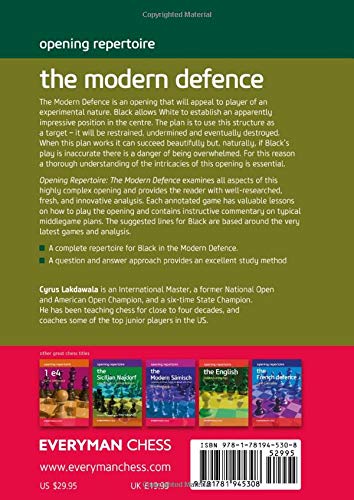
Birthday of IM Lawrence Cooper (16-vii-1970)
BCN wishes Happy Birthday to IM Lawrence Cooper (16-vii-1970)
Lawrence was born in Stone, Staffordshire and attend Walton High School, Stafford.
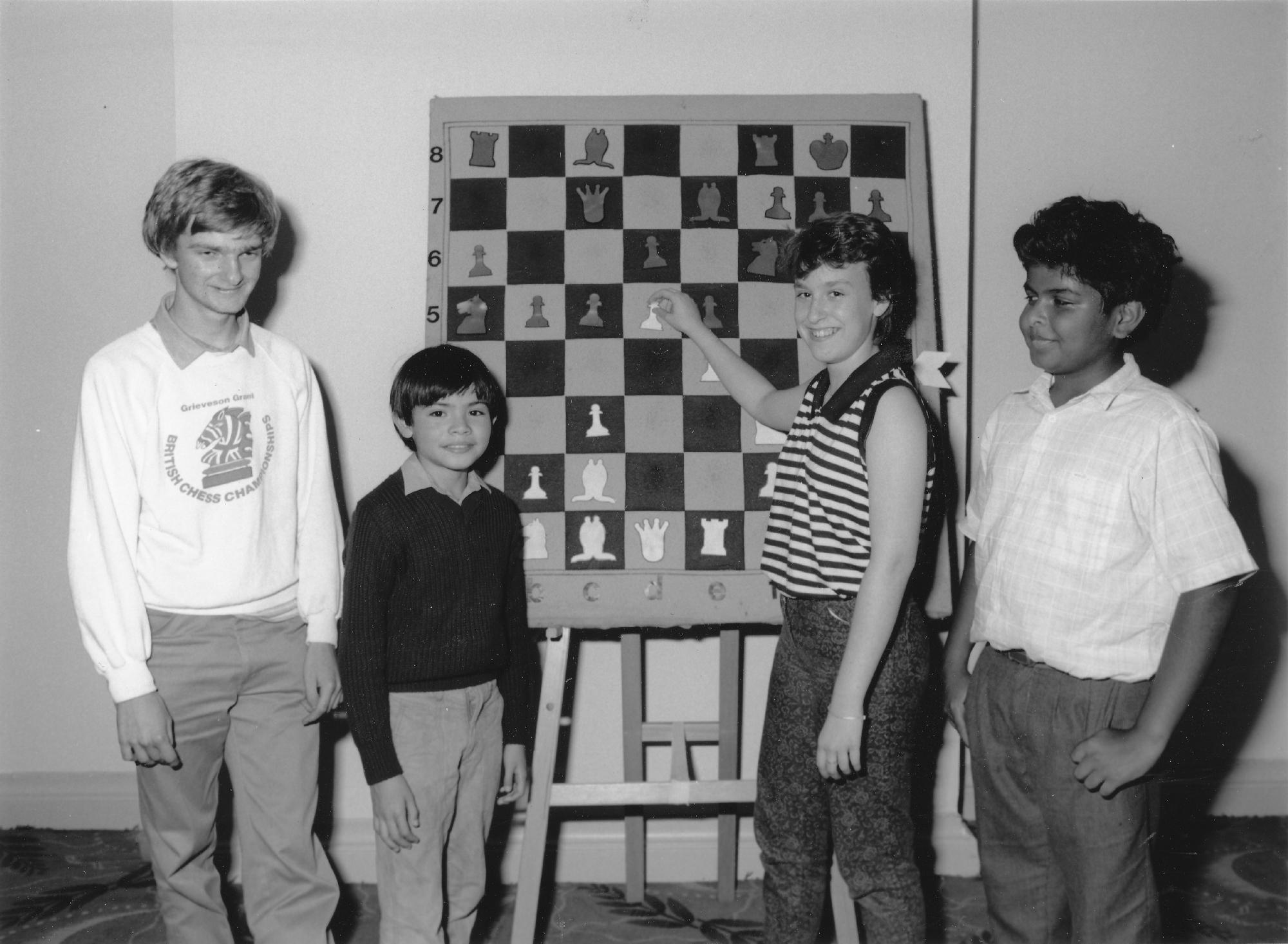
He became a FIDE Master in 1989 and then an International Master in 2001.
Lawrence was awarded the FIDE International Organiser title in 2011 and the FIDE Arbiter title in 2016.
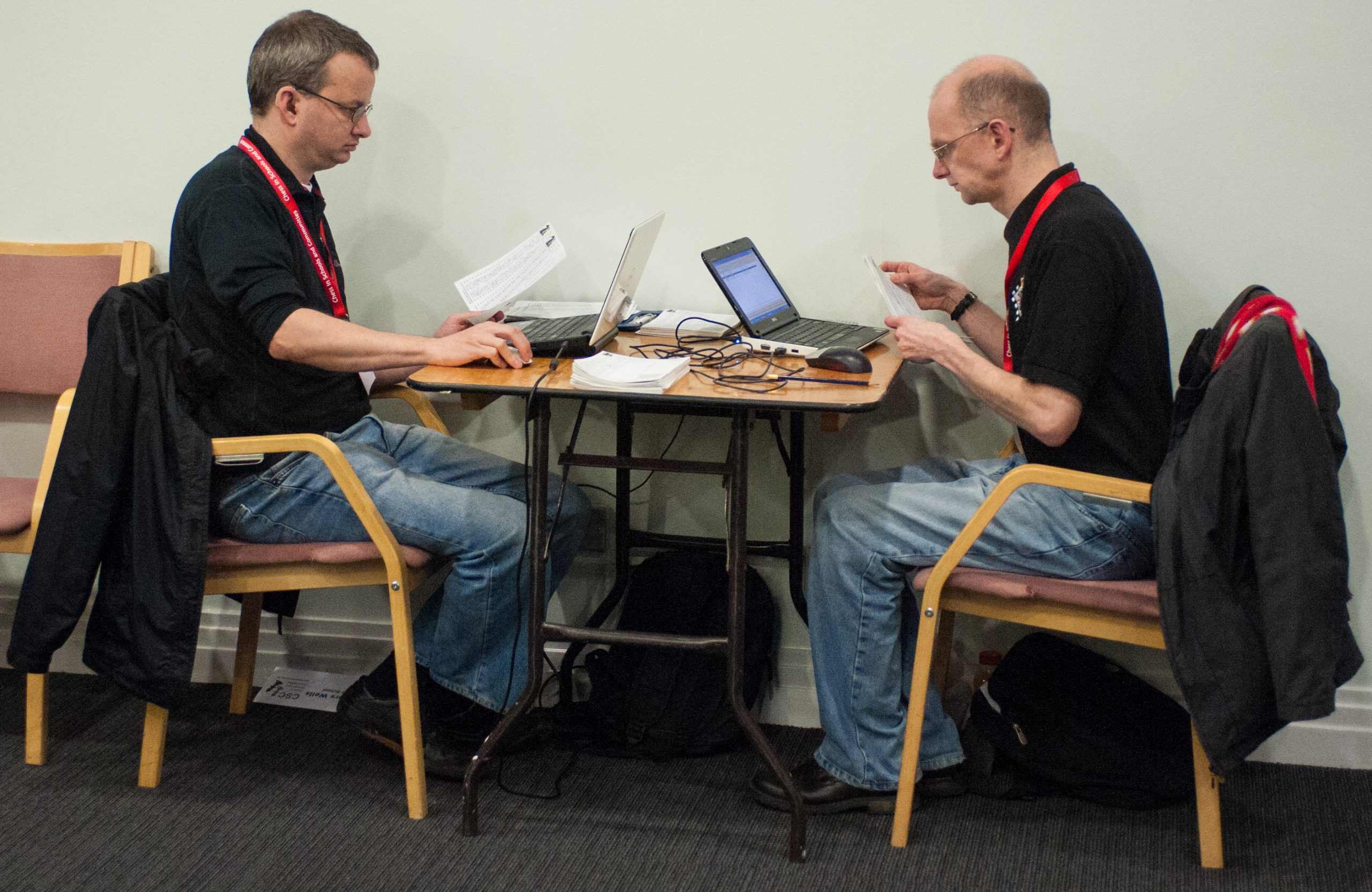
His peak rating was 2430 in January 1988.
Lawrence plays for Wood Green in the Four Nations Chess League (4NCL) plus Newport (Shropshire), Stafford, Bushbury and Worcestershire CCA in other competitions.
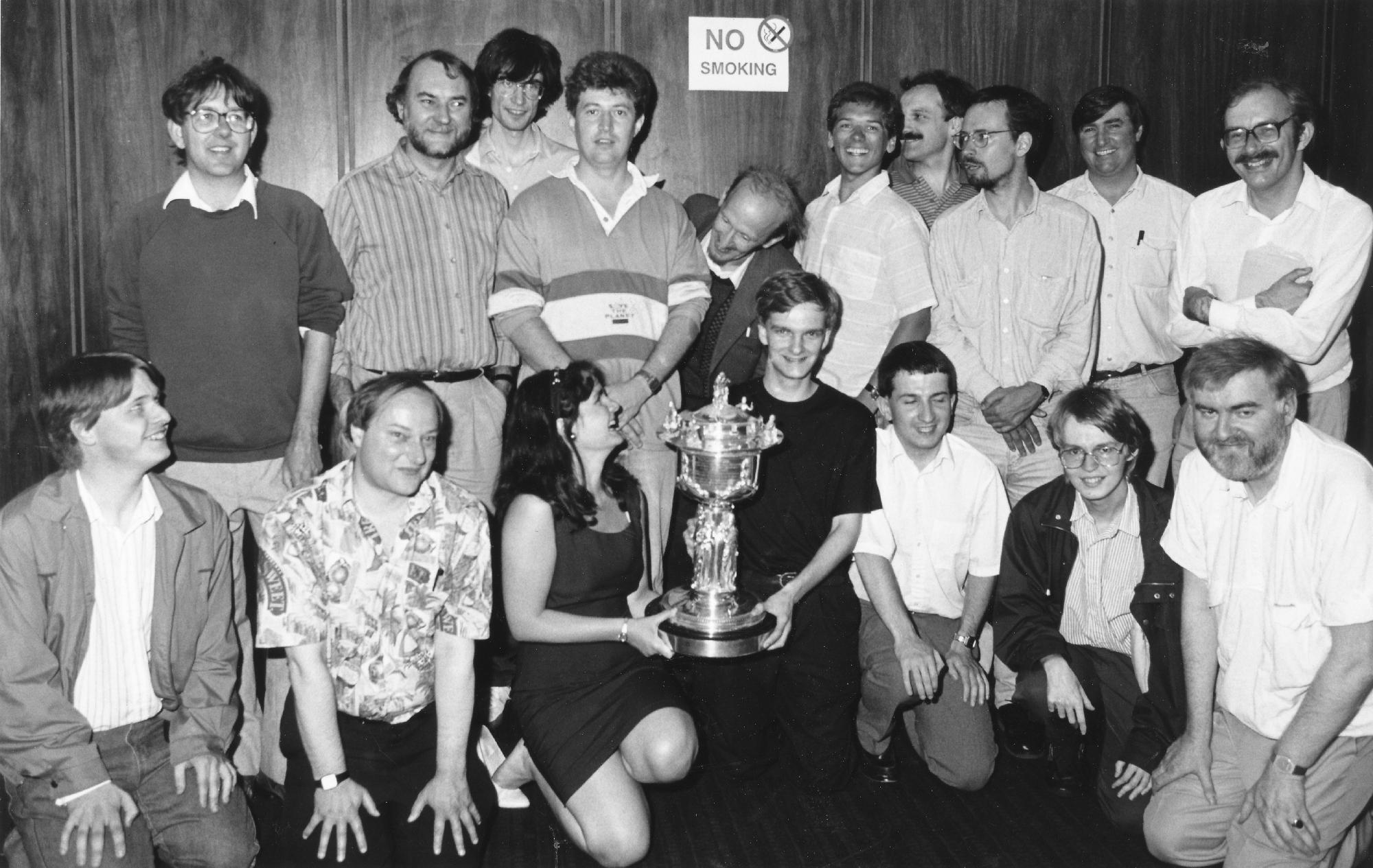
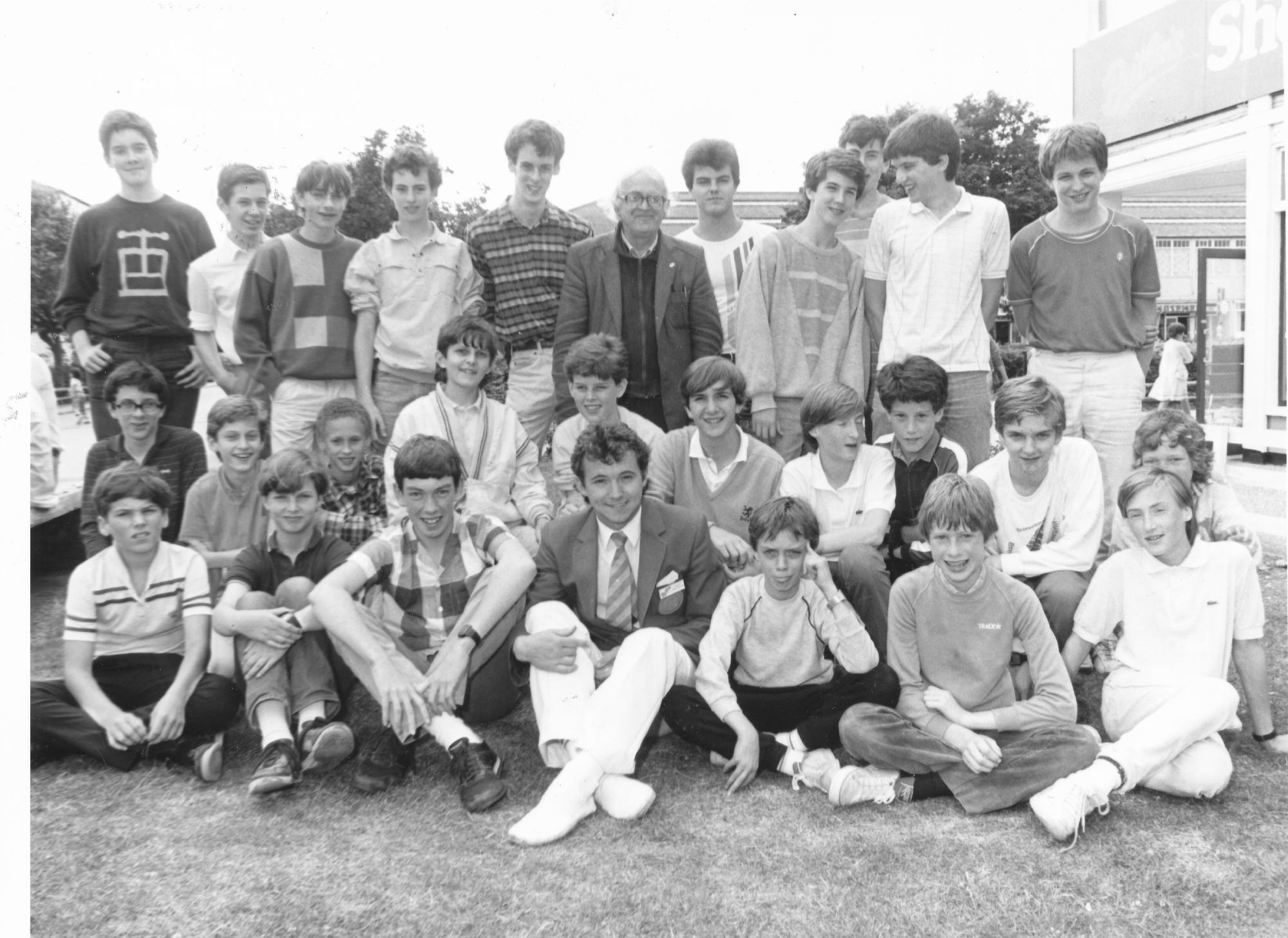
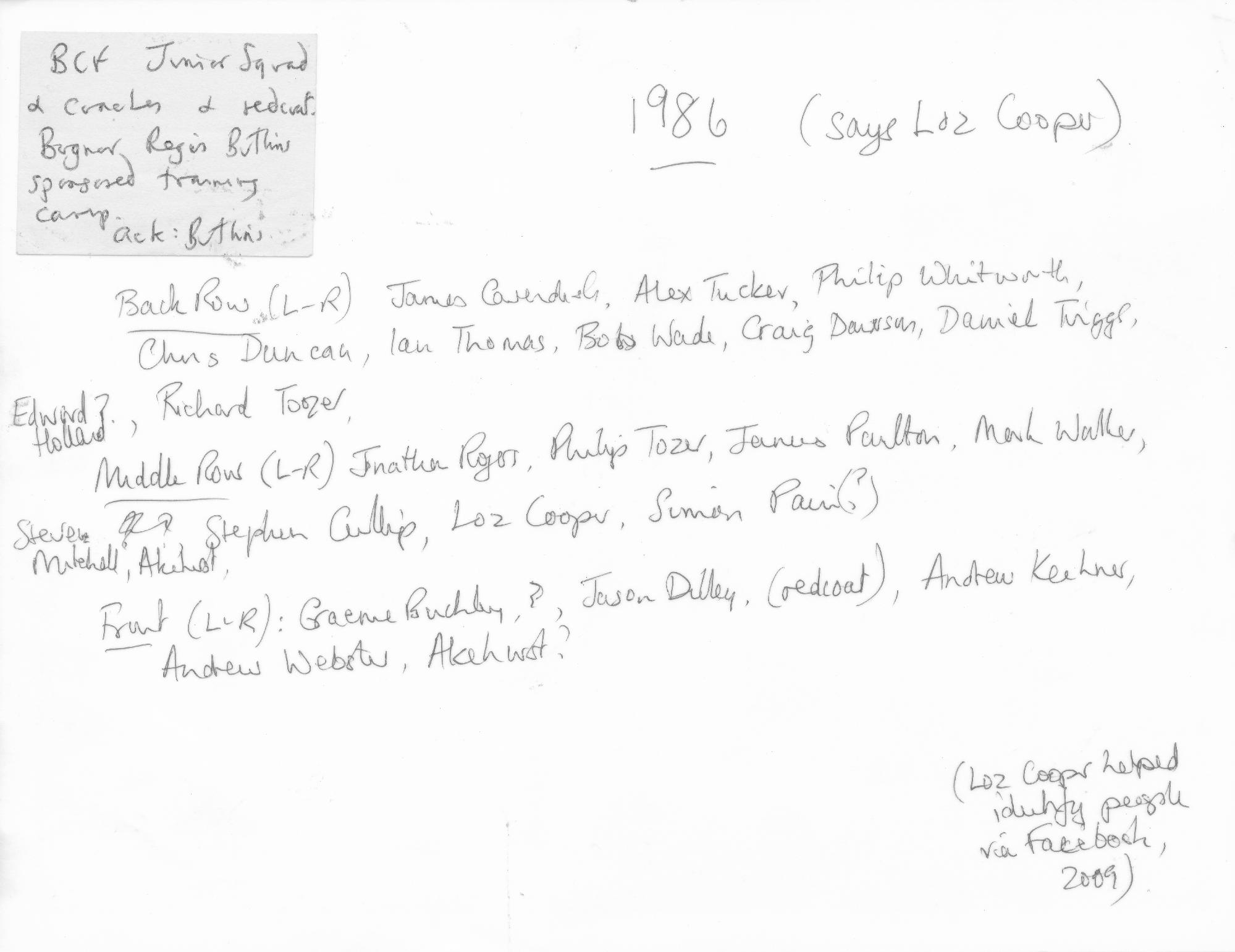
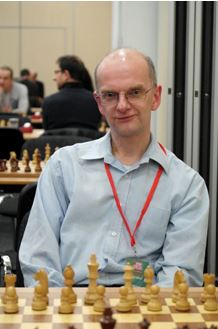
Birthday of IM Lawrence Cooper (16-vii-1970)
BCN wishes Happy Birthday to IM Lawrence Cooper (16-vii-1970)
Lawrence was born in Stone, Staffordshire and attend Walton High School, Stafford.

He became a FIDE Master in 1989 and then an International Master in 2001.
Lawrence was awarded the FIDE International Organiser title in 2011 and the FIDE Arbiter title in 2016.

His peak rating was 2430 in January 1988.
Lawrence plays for Wood Green in the Four Nations Chess League (4NCL) plus Newport (Shropshire), Stafford, Bushbury and Worcestershire CCA in other competitions.





